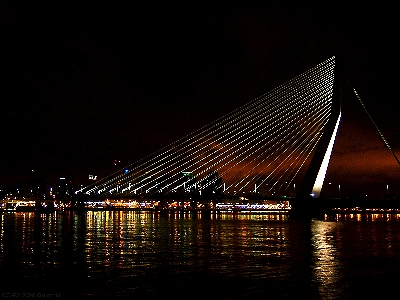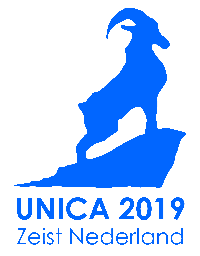

In Dutch “IJ” is treated as a single character sounding like “eh”.
Do you recall songs from childhood mentioning the Zuiderzee (Southern Sea)? That name came from Friesland in the Northern tip of the Netherlands. From most of the Netherlands it is northwards!
It used to be an inlet from the North Sea 100 km long and up to 50 km broad and about 5 metres deep. That allowed international shipping trade to and from its many harbours. In the 20th c it was effectively closed off from the sea and significant areas were reclaimed. It is now a fresh-water lake. The new name comes from one of the rivers which flow into it.
At 8.30 we depart by bus from Hotel Figi.
On our excursions there will be one or more buses for
English-speakers, one for French-speakers and one or more for German
speakers. Guides will tell us about the places we pass and details
about each stage of the outing.
In the time when the Zuiderzee was open to the North Sea, Hoorn,
the first stop on our tour was an important port. It was a base for
the Dutch East India Company. The town also gave its name to Cape
Horn at the tip of South America. 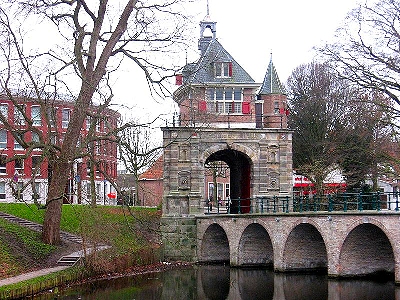
The Oosterpoort (Eastern Gate) at Horn.
Image from nl.wikipedia.org by M. M. Minderhoud.
Today we will transfer to the steam-tramway. (A light-railway system which sometimes travels through streets.) You can learn about it at www.stoomtram.nl.
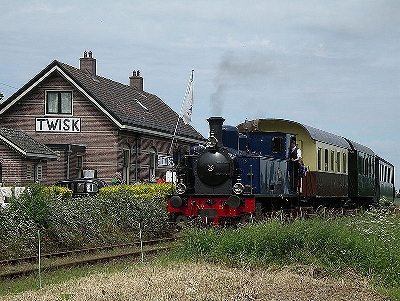
We travel to Medemblik, where we have an hour to look around. The town is known for its sailing events. It has a picturesque small inner city with many houses from the 17th and 18th century, two big churches, an old orphanage, a town hall and, of course, Castle Radboud, which is just at the border of the innercity.
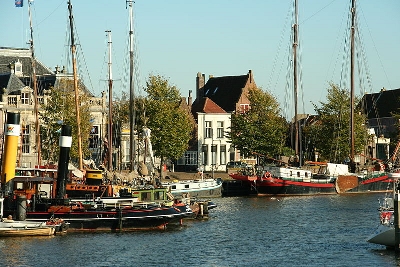
Then we board the museum ship “Friesland”, which will take us to Enkhuizen across IJsselmeer lake.
A West Frisian lunch will be served on board the "Friesland". We don't know the menu but their food tends to hearty. Meatballs and croquettes of cheese are common, as are rollmops and thick pancakes served with a molasses-type syrup. Yummy!
After arriving in Enkhuizen we will visit the Zuiderzeemuseum. (www.zuiderzeemuseum.nl) At about 17.30 a boat will take us to the parking lot where the buses will be waiting for us to go to Volendam.
In the early part of the 20th century Volendam became something of an artists' retreat, with both Picasso and Renoir spending time here.
It is well known for its old fishing boats and the traditional clothing still worn by some residents. The women's costume of Volendam, with its high, pointed bonnet, is one of the most recognizable of the Dutch traditional costumes, and is often featured on tourist postcards and posters. Volendam also features a small museum about its history and clothing style, and visitors can have their pictures taken in traditional Dutch costumes.
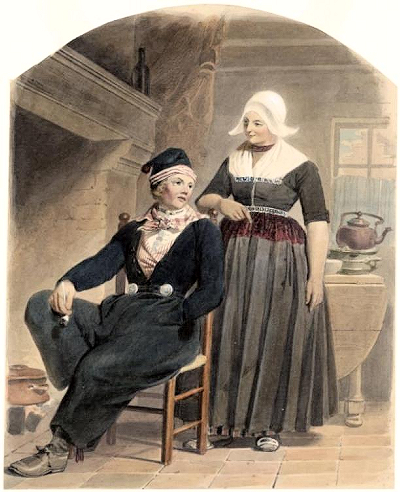
At 20.30 we will be expected for dinner in Hotel Spaander, situated right by the water’s edge.
Afterwards the buses will bring us back to Zeist, where we are expected to arrive around 23.30.
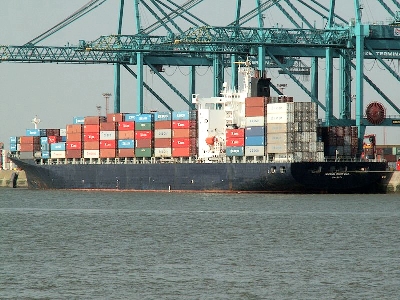
Rotterdam is Europe's largest port. It has a lively cultural
life and maritime heritage. It is remarkable for its modern
architecture. It is at the confluence of the Rhine, Meuse and
Scheldt rivers, which give waterway access into the heart of
Western Europe. Its nicknames are "Gateway to Europe" and
"Gateway to the World.”
13.30 Departure from Figi
The first part of this excursion is not yet announced.
At 17.00 we will leave for a bus trip to Rotterdam.
There we board the boat "De Rotterdammer" for a cruise through the
largest port in the world and we will have dinner on board.
We will be back in Zeist around midnight.
